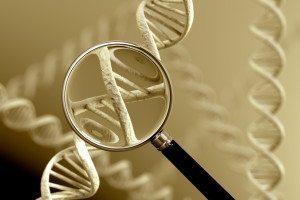Making The Most of Genealogical DNA

The widespread availability of genealogical DNA kits in genealogy circles is leading to some interesting scenarios. There are always the big surprises, such as learning one has been adopted or finding an unexpected sibling. But more often, genealogy fans are given the opportunity to connect with distant cousins and learn more about the bigger picture of their family’s journey. Consider the case of siblings that immigrated to the US, and then headed for different parts of the country. Today, descendants of one family could be spread throughout Massachusetts, North Carolina, Utah, and Oregon. Despite sharing a surname and exciting family history, known relationships no longer exist between these distant branches of the family tree. Genealogical DNA research and databases are helping to change that.
What is genealogical DNA?
Genealogical DNA kits typically involve a small package that gets mailed to a recipient. You collect a small amount of DNA through a method such as swabbing the inside of your cheek with a Q-tip. That material is then sent back to the lab and your DNA is decoded. From a genealogical perspective, information is often presented in two ways. The first is a general ethnicity breakdown. For example, a sample client might learn that she or he has English, German, and Japanese ancestry as well as the rough percentages of those breakdowns.
Users can also elect to include their information in a database. If you opt to participate in those databases, you’ll be shown individuals in the database with shared ancestry and roughly how you’re related. Often you’re provided with a range, as well as whatever information the person has chosen to make public. A typical entry might include, “John Smith lives in Boston, MA. His family surnames include Smith and Jones. He is your distant cousin, between 3rd and 5th.”
Where to go from there?
If you’ve signed up for DNA test, received your results, and put your information into the database, you’ve opened up a new avenue for potential research and collaboration. Here are some tips – and cautionary notes – to help you make the most out of this opportunity.
Fill out your profile: You’ll have the opportunity to provide base information about yourself, such as name, location, known ethnicities, geographies your family resided, surnames, and a short bio. Each provider’s options are a little different. Share as much as you feel comfortable, but remember that it’s wise to protect your personal information in public forums.
Privacy settings
Do you want the ability to be contacted by people who share your DNA? Most systems have the capability to set your profile as invisible, to allow people to send you a message, or to request more information.
Sharing DNA
Often systems allow two users to share their core DNA. From a genealogical perspective, it may help you determine in what way you’re related to someone. However, there are a variety of reasons that individuals would want to be cautious about sharing their DNA with strangers, so think carefully before doing so and examine different levels of sharing available through the service you’ve used to determine how you want to protect your information.
Reaching out
If the database indicates that you have a relative, it may be interesting to reach out. Whether you’re just saying hello or you’re striking up a conversation with a specific question in mind, keep your first interactions brief. Introduce yourself, provide a little background, and clarify your hopes for a conversation. Allow an adequate amount of time for a reply, as people don’t always check their mailboxes on these sites with the same frequency they check email.
Collaborative research
One of the most exciting outcomes of using a system like this is the ability to develop collaborative research relationships. For example, if you connect with the descendants of someone on your extended family tree you may have the potential to learn more about their lines and research. Finding extended family that shares your passion for genealogy can open up entirely new avenues for inquiry and enjoyment.
Are you interested in learning more about how a professional genealogist can help with your genealogy project? Contact us today to arrange for a professional consultation to discuss research projects, genealogical DNA, and more.
